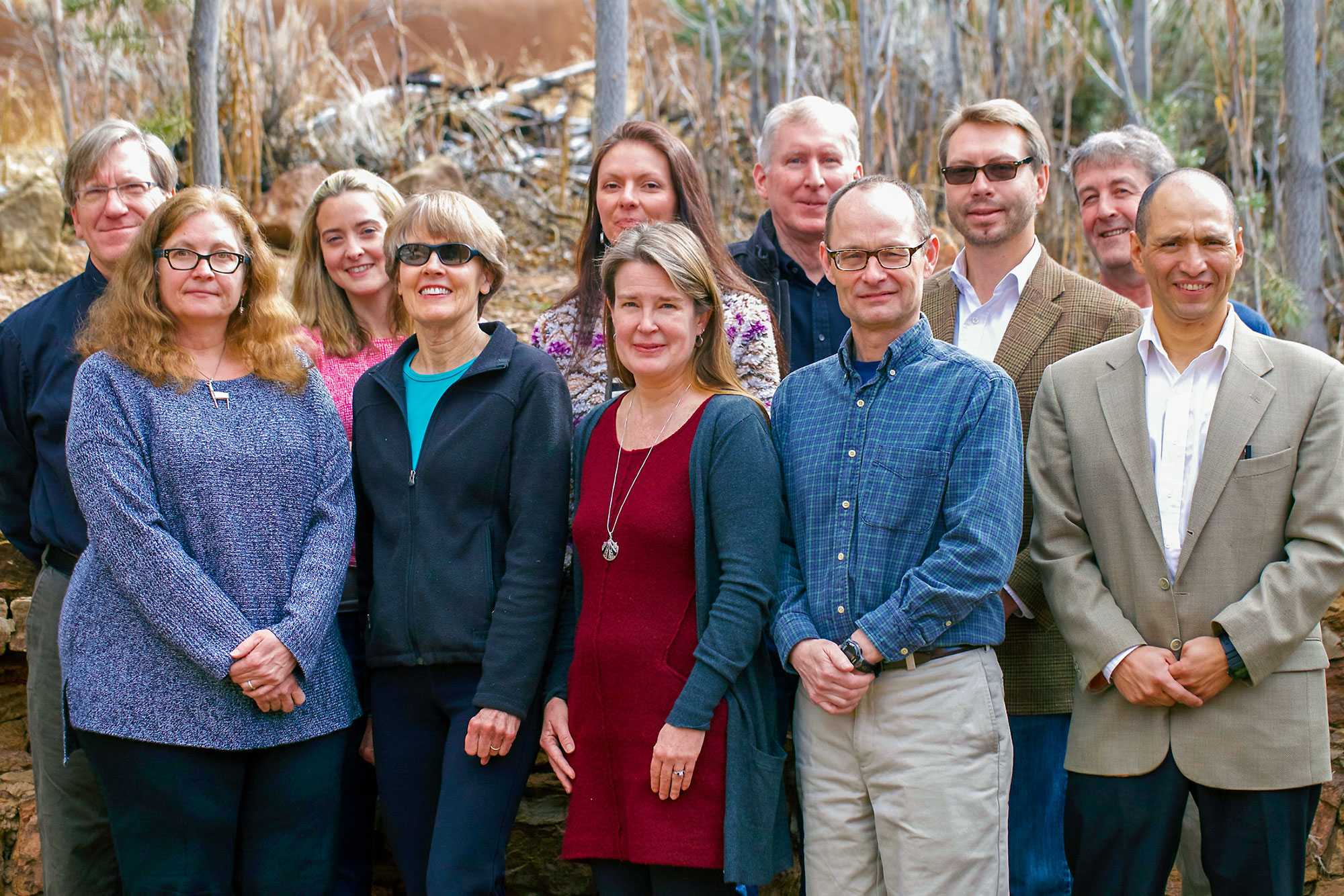
Chaco and Cahokia: Histories, Landscapes, and Hinterlands
Co-chaired by Danielle Benden, Senior Curator of Anthropology, Department of Anthropology, University of Wisconsin, Madison and Brenda K. Todd, Project Manager/Cultural Resource Specialist, Denver Service Center – Planning Division, National Park Service, March 3-4, 2015. Photo by William Geoghegan.
March 3–4, 2015
Chaco and Cahokia: Histories, Landscapes, and Hinterlands
Chaco Canyon and Cahokia are perhaps the most well-known and largest pre-Columbian centers north of Mexico; both served as powerhouses in the prehistoric Southwest and Midwest and reached their cultural climaxes between AD 1050 – 1150. Located nearly equidistant to the Valley of Mexico, both sites demonstrate varying degrees of connections to Mesoamerican cultures flourishing at the same time, as evidenced by artifact styles, ideologies, architecture, iconography, and the importance of astronomy. This seminar convened to evaluate the current state of research and theoretical issues for Chaco and Cahokia, their respective hinterlands, and to lay the groundwork for a truly continental archaeology by considering connections to Mesoamerica. Building upon a 1990’s Amerind Seminar that compared southwestern and southeastern archaeology, and expanding upon a collaboration of current Mississippian and Chacoan archaeologists first initiated as part of a 2012 Society for American Archaeology symposium, seminarians focused on systematically investigating the potential connections and interactions between Chaco and Cahokia with contemporary manifestations across much of North America. Participants focused the discussions on the following five themes:
- The question of contemporaneity: did Chacoans and Cahokians know about each other and of people in Mesoamerica?
- Were Chaco and Cahokia connected to Mesoamerica and, if so, how?
- What are the relationships between Chaco and Cahokia, and their hinterlands?
- Was there evidence of structural violence and the taking of captive women?
- How is power displayed and/or organized? Is it mostly seen as ritual, political, social, or economic in nature, or a combination of these?
Seminar co-chairs, Brenda Todd and Danielle Benden, reported that, “all participants had a chance to truly build on previous presentations, especially those offered as part of a Society for American Archaeology (SAA) session in 2012… The SAR seminar allowed participants to really focus on key issues identified during the SAA symposium and expand on those themes through a dialog.” The next step is to publish the revised papers in an edited volume with hopes of publishing it within 12-16 months of the end of the seminar.
Danielle Benden, Chair
Senior Curator of Anthropology, Department of Anthropology, University of Wisconsin, Madison
Brenda K. Todd, Chair
Project Manager/Cultural Resource Specialist, Denver Service Center – Planning Division, National Park Service
Susan M. Alt
Associate Professor, Department of Anthropology, Indiana University
Robert F. Boszhardt
Archaeologist, Retired
Catherine M. Cameron
Professor, Department of Anthropology, University of Colorado, Boulder
Charles R. Cobb
Professor, Institute of Archaeology and Anthropology, University of South Carolina
Gerardo Gutierrez
Assistant Professor, Department of Anthropology, University of Colorado, Boulder
Stephen H. Lekson
Curator of Archaeology, Museum of Natural History, University of Colorado, Boulder
Timothy R. Pauketat
Professor, Department of Anthropology, University of Illinois
Ruth M. Van Dyke
Professor, Department of Anthropology, Binghamton University-SUNY
Gregory D. Wilson
Associate Professor, Department of Anthropology, University of California-Santa Barbara